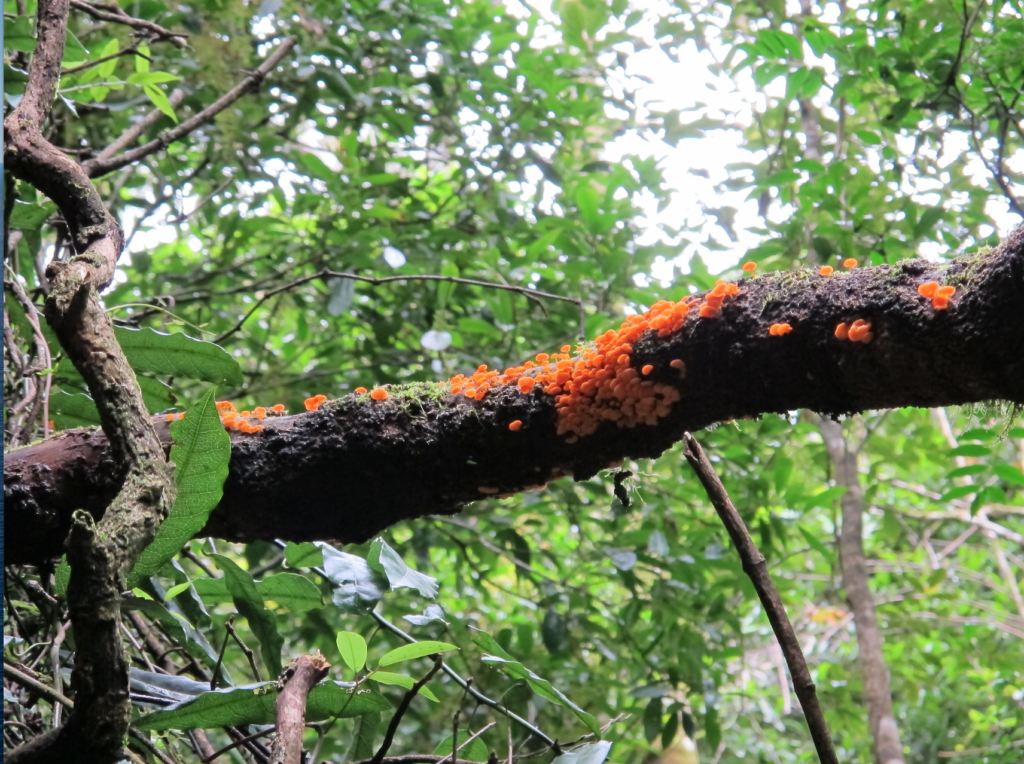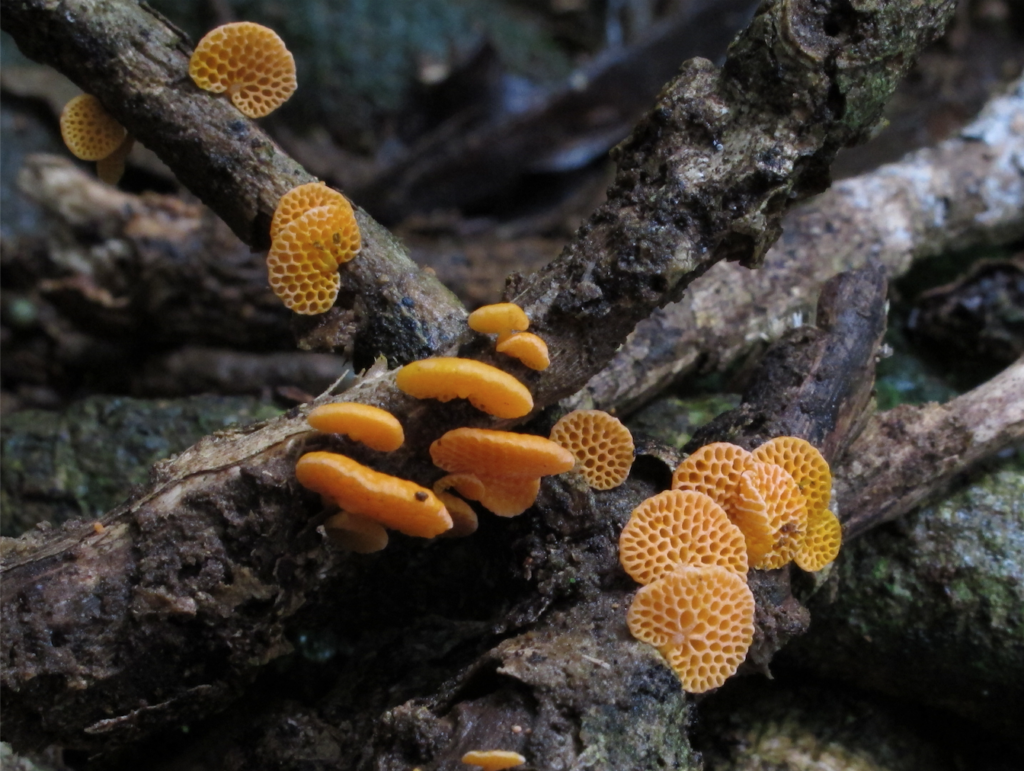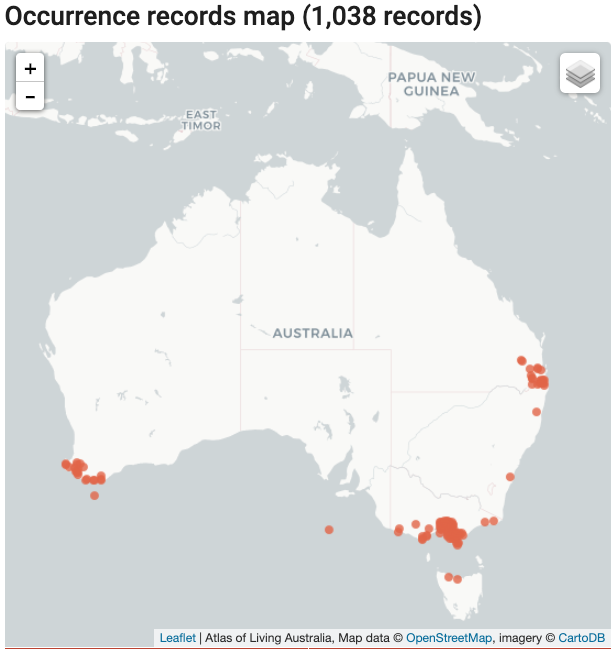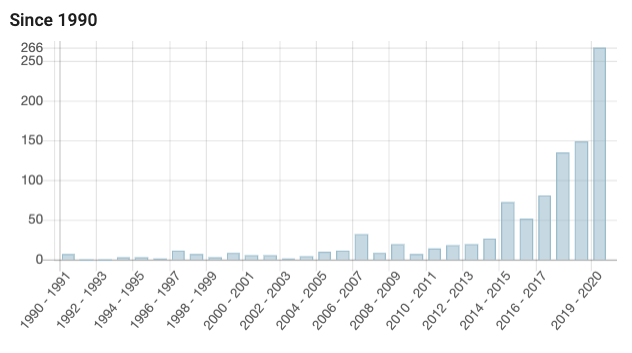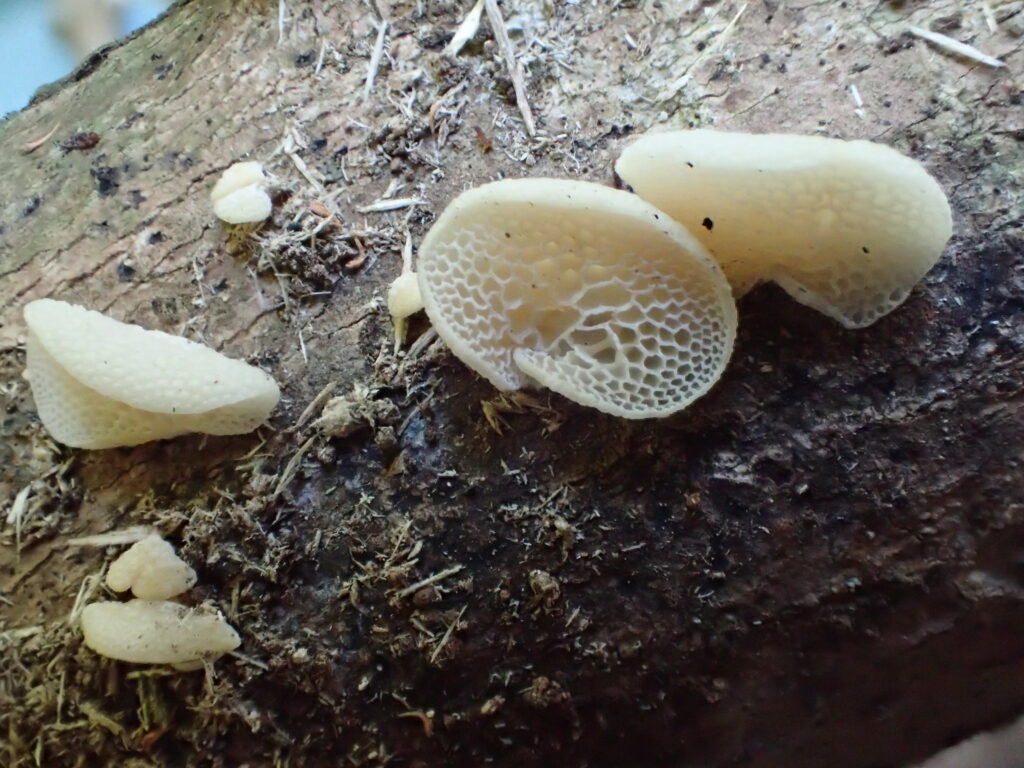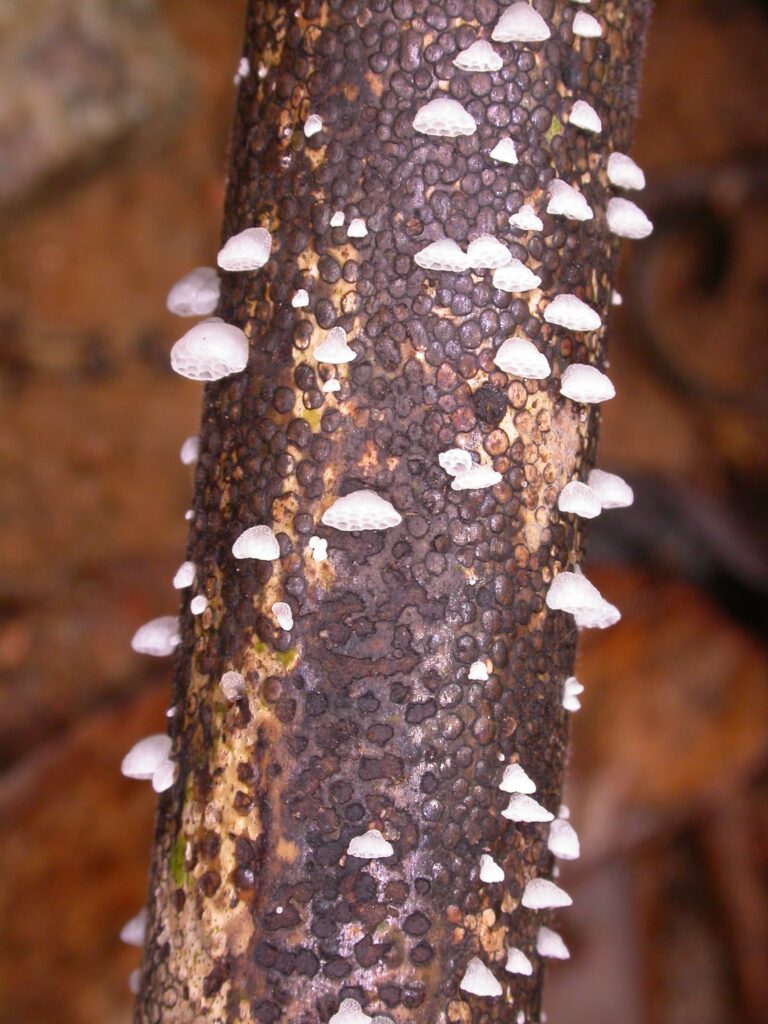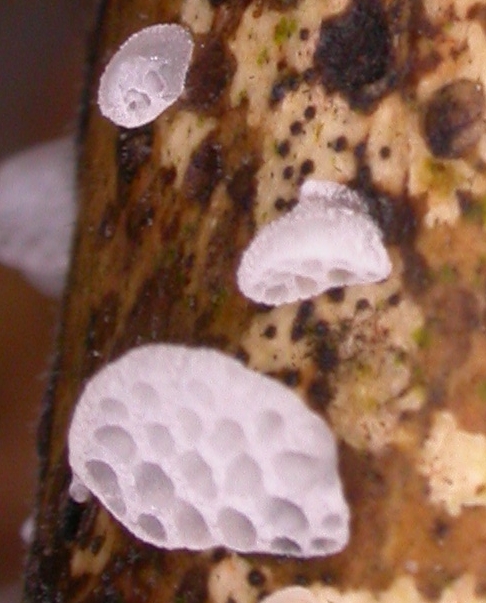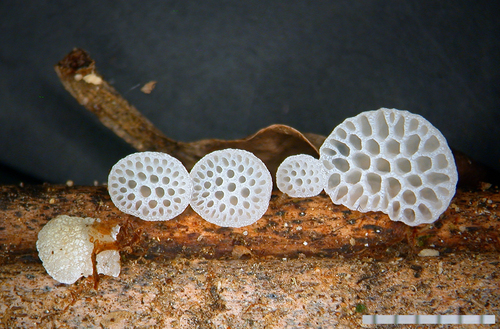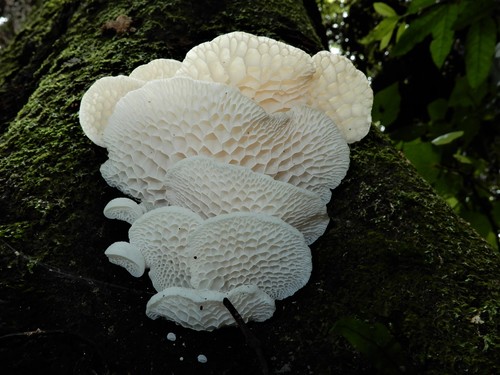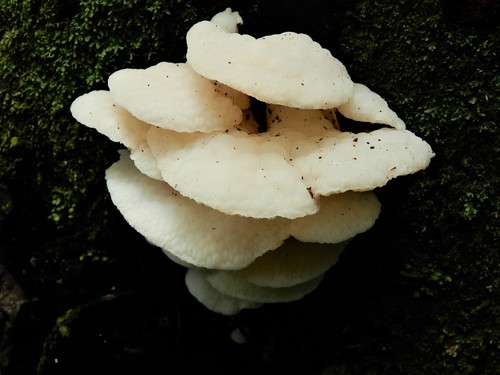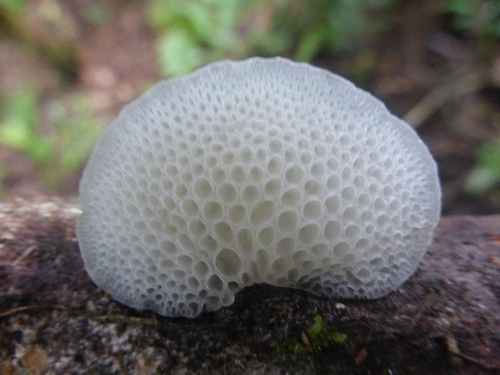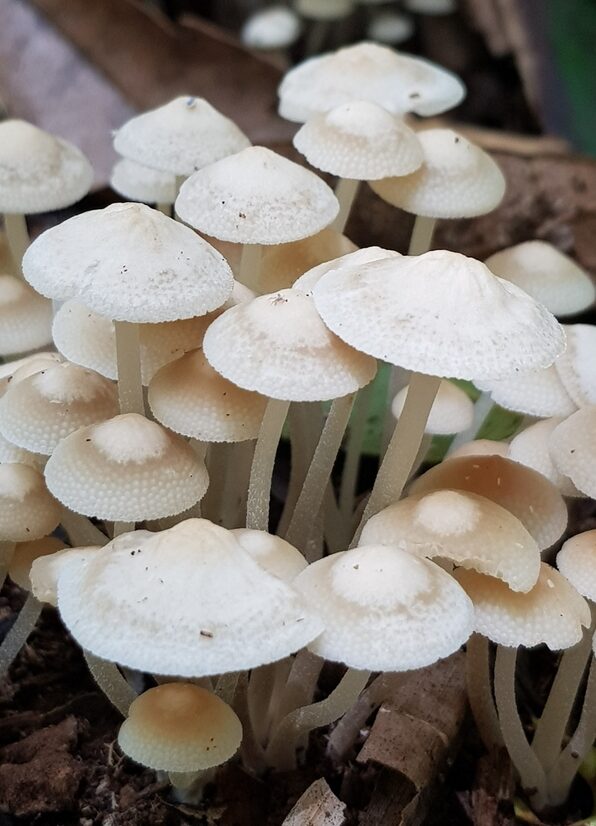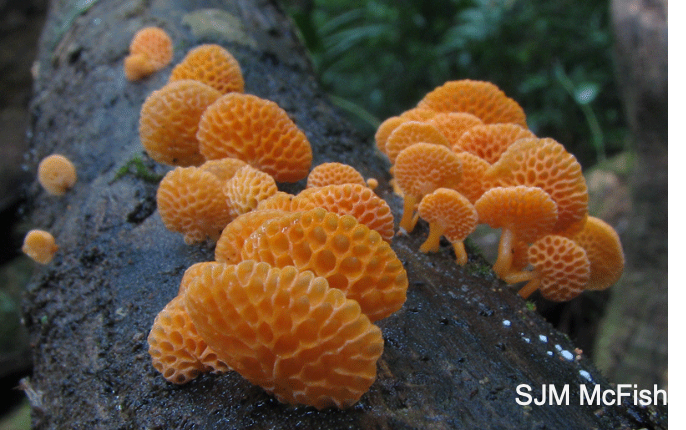
Tracking the invasive Orange Ping Pong Bats fungus

The Orange Ping Pong Bats fungus or Favolaschia claudopus (previously Favolaschia calocera) is an invasive 'weedy' wood decomposing fungus that has been spreading rapidly in Australia since the 1990's. It is a threat to diversity of indigenous fungi as it has a broad range of substrate from twigs up to large logs and out competes native wood rotting fungi that help in nutrient cycyling. It is able to live in the canopy of wetter forests so airborne spores can spread widely and away for paths. It has spread across much of southeast Queensland, southwest WA, and eastern Victoria. There are isolated patches in NSW and and northern Tasmania. Importantly there are National Parks and areas it so far hasn’t reached. For example have been no reported sightings in the Wombat Forest or the Grampians in Victoria. Hygiene to prevent spread into new conservation areas is important.
Stop the spread!
In order to stop the spread of this fungus make sure to use proper field hygiene:
- Always wear clean clothes when walking in the bush
- Remember to clean your hats, bags and coats as well as other clothing
- Regularly clean equipment such as cameras, tripods, and any tools used in the field
- Cars and machinery can also carry spores
- Scrub all soil from your shoes and dip them in, or spray they with, 70% methylated spirits or anti-fungal agent
- If you are visiting multiple sites in one trip go to "weedier" sites last to void spreading pest fungi from "weedy" sites to cleaner sites
- Bring methylated spirits with you to disinfect your shoes in between sites
- Remember the spores are not just on the ground but can be airborne
The LAMP test
Recently MYCOmmunity have developed a LAMP test to detect its DNA in the environment. The test is a colour change reaction that turns yellow in the presence of Favolaschia claudopus (and other species in the Favolaschia calocera group that F. claudopus is part of) DNA. It is highly sensitive and can be performed in the field in less than half an hour. We are hoping that this test can be used to monitor and slow its spread. In particular we would like to see if it is being moved around by equipment such as council mulchers. We have already developed the test and found it to be specific to Favolaschia. We need help getting samples of native Favolaschia species to make sure that the test is specific to Favolaschia claudopus. If you are able to assist with finding samples please contact us via the contact page on this website.

Native Favolaschias
There are several native Favolaschia found in Australasia. So far these are all pale coloured and nothing like the weedy bright orange Favolaschia claudopus (Orange ping-pong bats).
Indigenous species of Favolaschia are uncommonly recorded in Australia. We probably share species with the rest of Austalasia and possibly some as yet unnamed ones including: Favolaschia austrocyatheae, F. cyatheae and F. pustulosa. These are fan (or laterally attached) species. Some range in size from very small, just a few millimetres across like F. austrocyatheae and F. cyatheae. To larger fans from a few millimetres to 1-3 cm across like F. pustulosa.
Some phylogenetic work is also using the name Favolaschia manipularis (previously Filoboletus manipularis). This is also pale in colour with a pored undersurface but these are larger and typically have a central stem. There are likely to be some undescribed species in group.
Collections that can support updated taxonomy to include DNA work will help us develop molecular primers so that we can start use environmental screening to discover more about these rare indigenous fungi.
Please help us by sharing collections (If you have landholders permission and any necessary permits) please contact us at using the "contact" tab on this website with Favolaschia in the subject.
Images below: Some natives Favolaschias from Australasia

